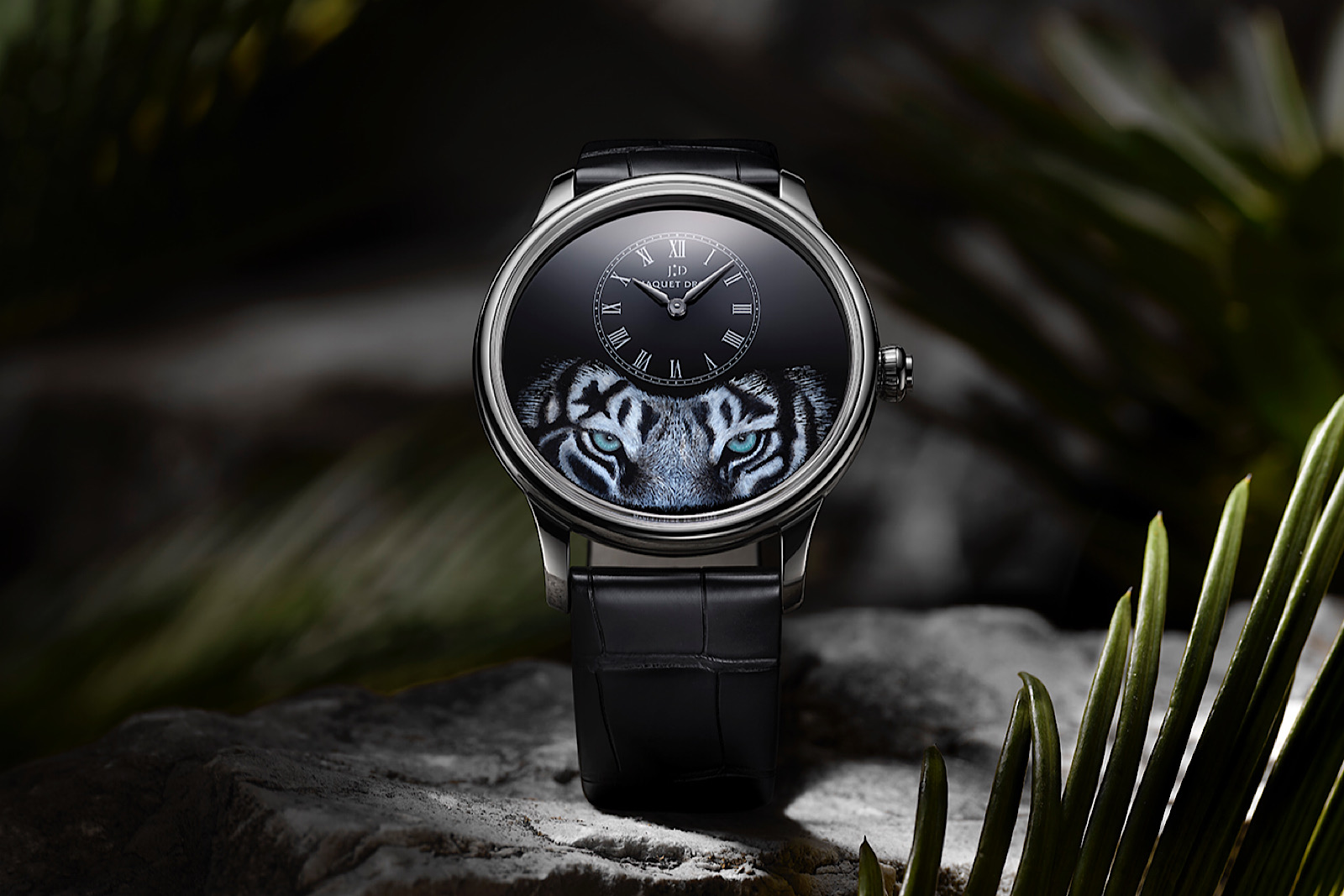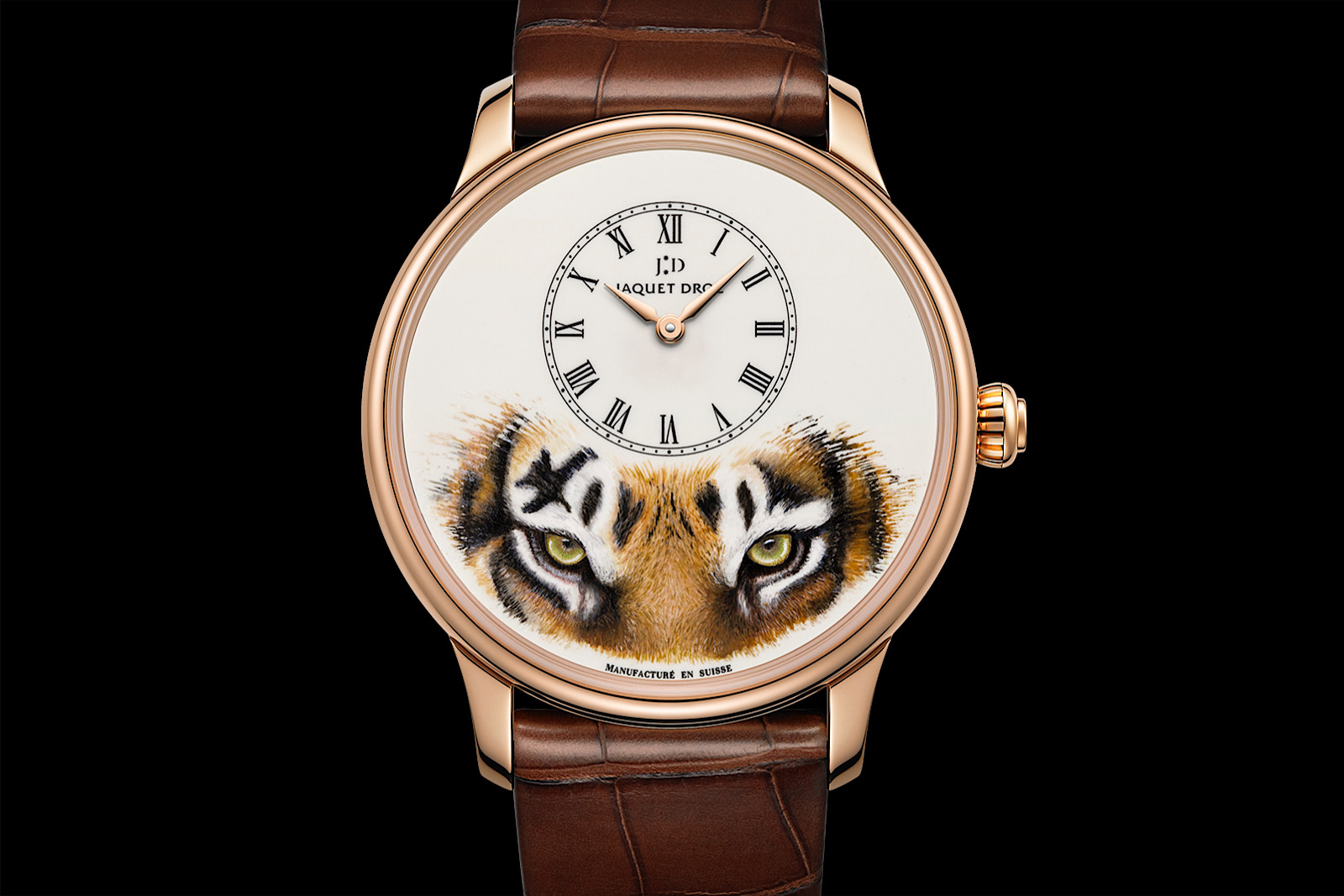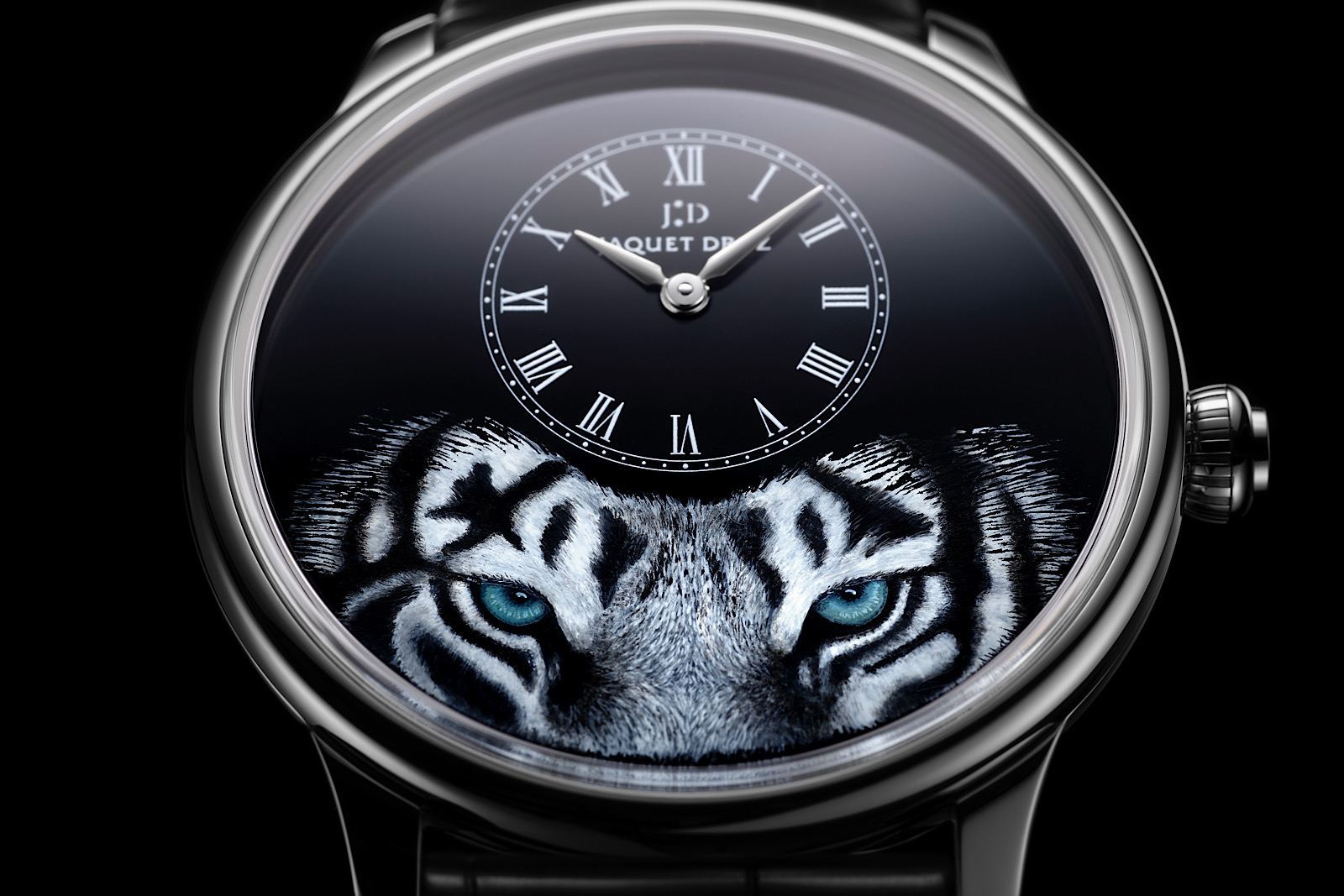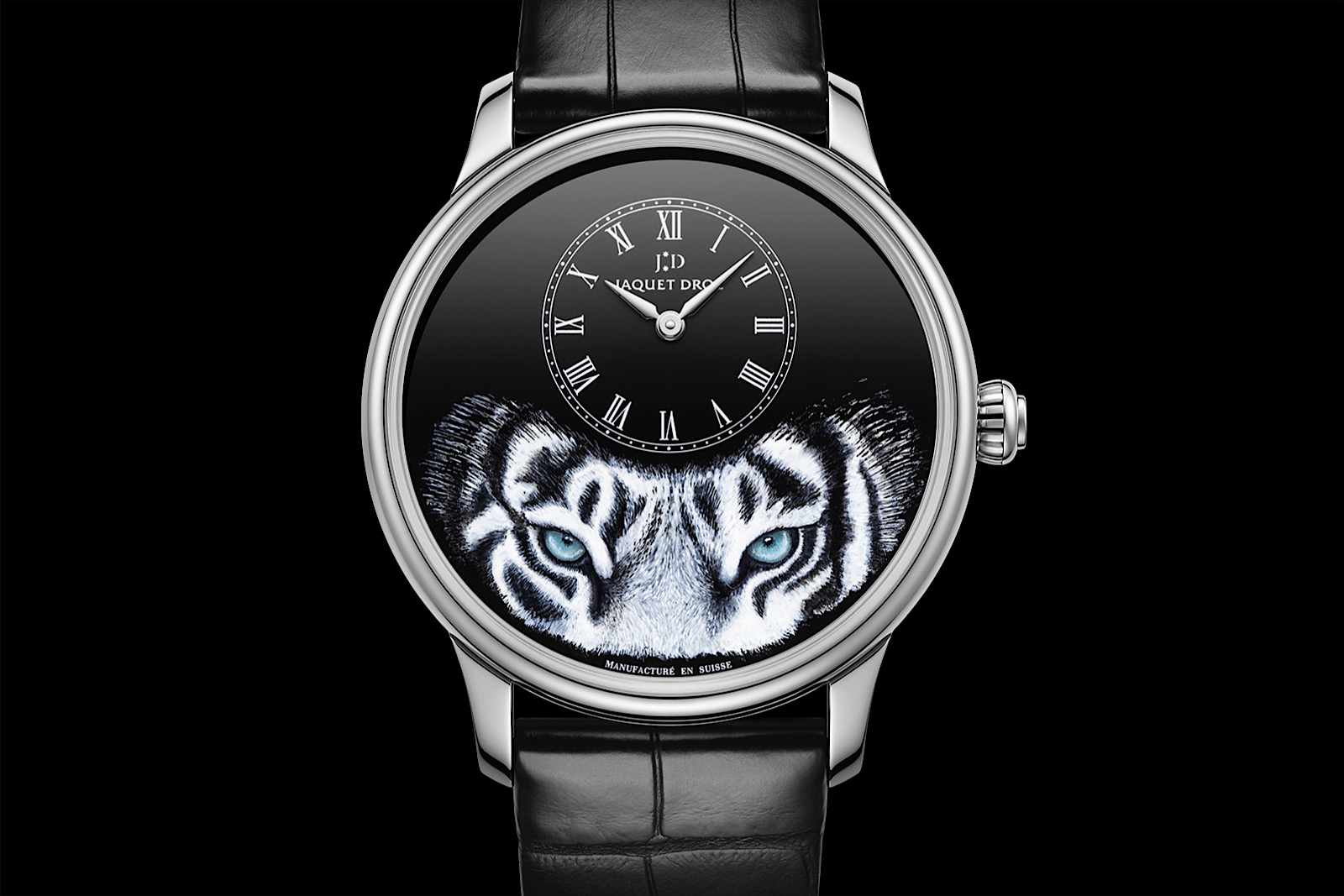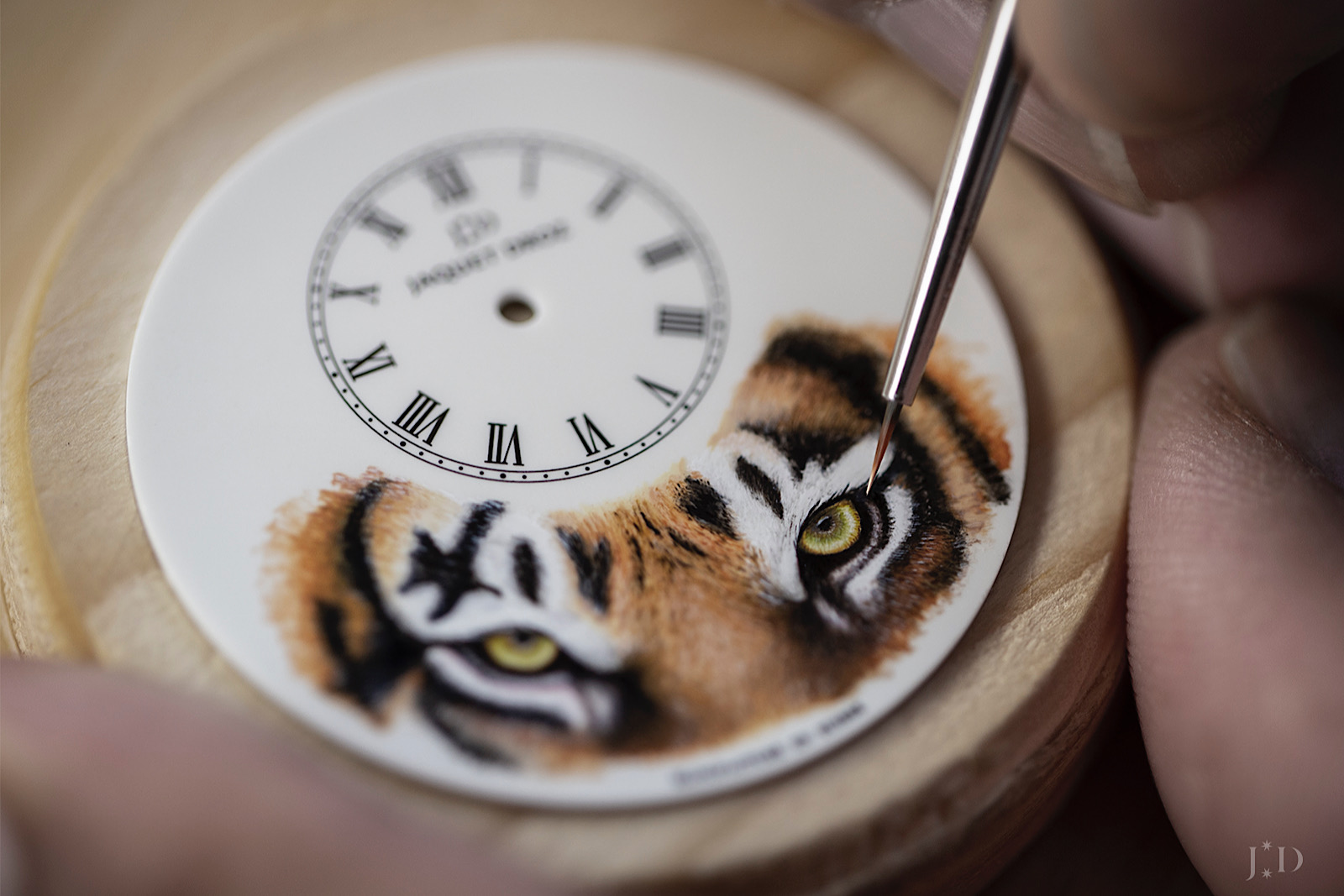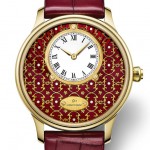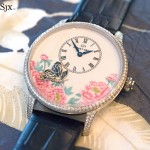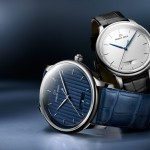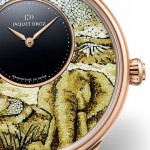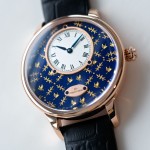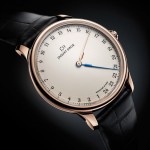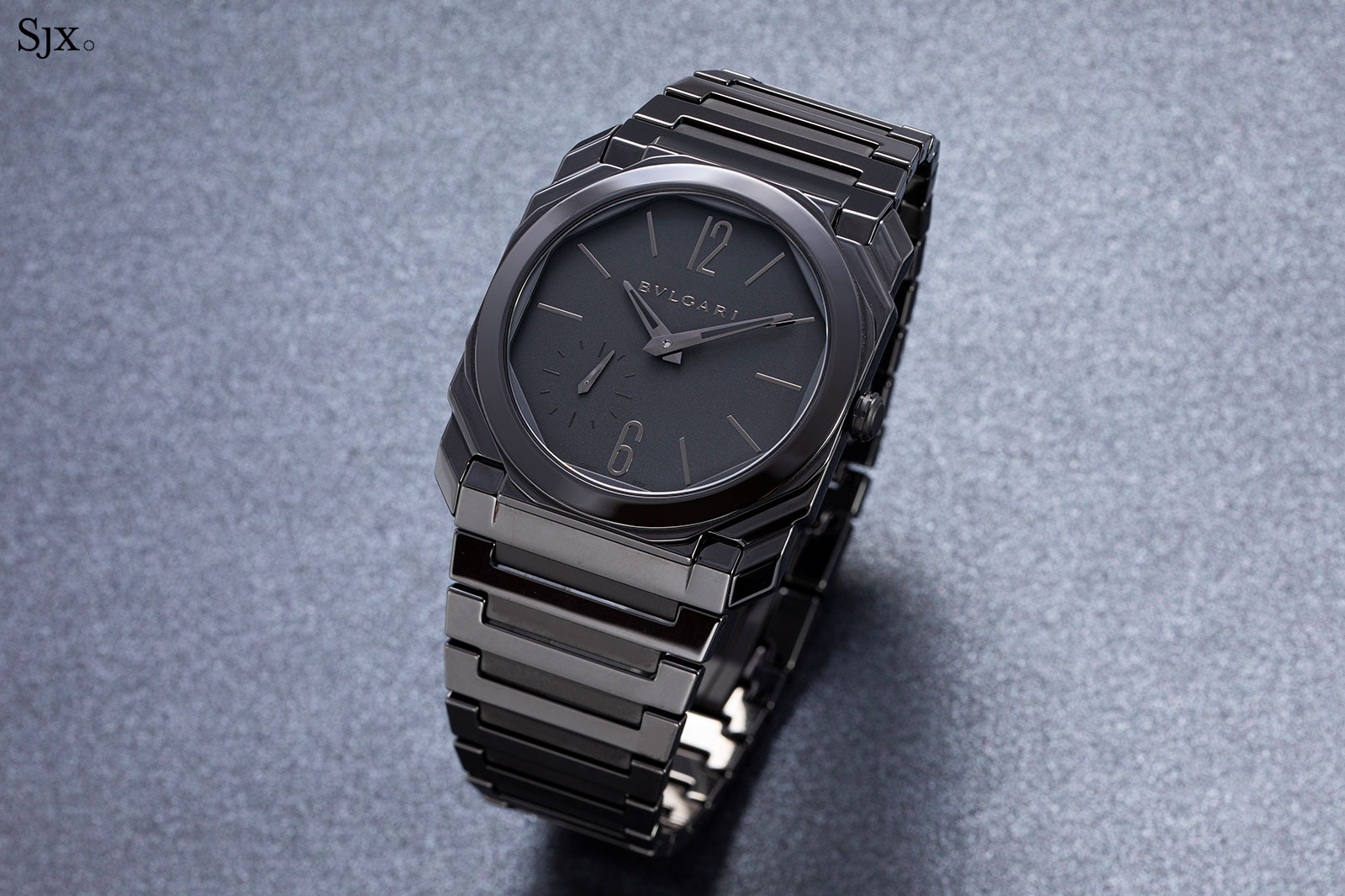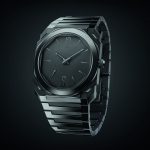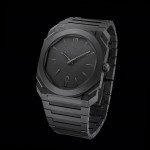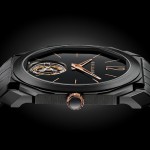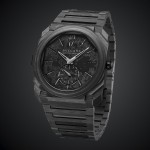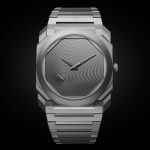Smart and original in design, the Octo Finissimo is extremely slim, well priced, and a strong seller for Bulgari, which has rolled out many iterations, including one in matte-black ceramic last year. Now Bulgari has added the shiny version to the line up with the Octo Finissimo Black Sandblast-Polished Ceramic.
Initial thoughts
The new Octo in all its glossy glory is ideal for anyone who found the original ceramic Octo flat and dull.
But I prefer the matte version – the muted look very much suits the style of the watch. At the same time, polished ceramic, especially for a thin and lightweight watch, is too reminiscent of plastic.
That aside, the technical appeal of the ceramic case and bracelet is the same as with the matte model. Both are constructed identically – simple and complex at the same time – differing only in the finish and colour.
Though visually identical to the metal-alloy models, the ceramic Octo has an entirely different construction, which was a necessity due to the material. That’s an appealing factor in itself, because the watch was designed from the ground up as an all-ceramic watch; even the dial is ceramic.
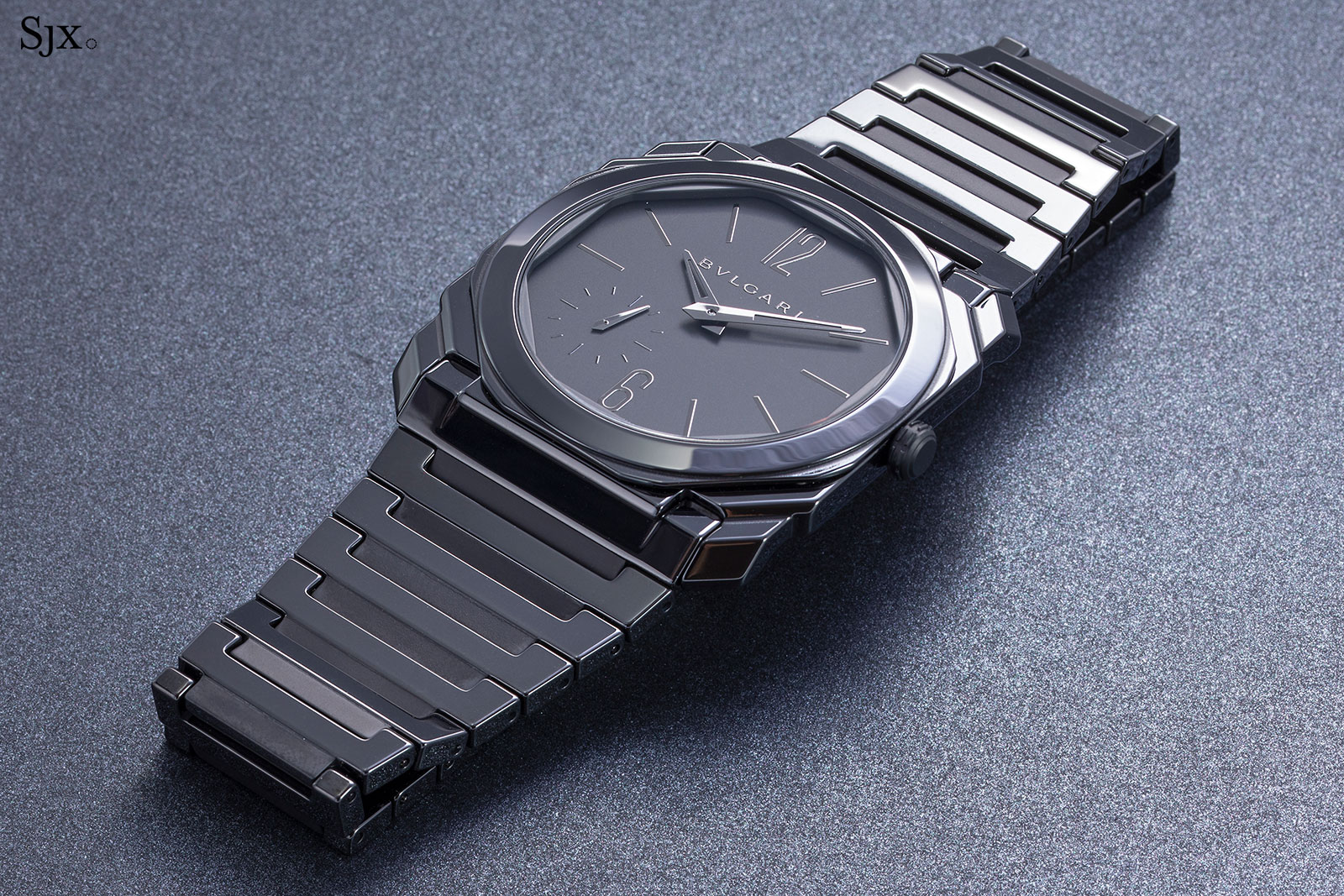
The new Octo Finissimo is light and smooth on the wrist. In fact, it is difficult to distinguish the tangible feel of the two ceramic versions from each other, and even from the titanium version.
And like all other versions of the Octo, the new version wears well, with one caveat: wrists below a certain circumference don’t really suit the watch, so it’s worth trying it on before buying. Because the case is wide and flat, on a small wrist the watch feels a bit too much like a biscuit.
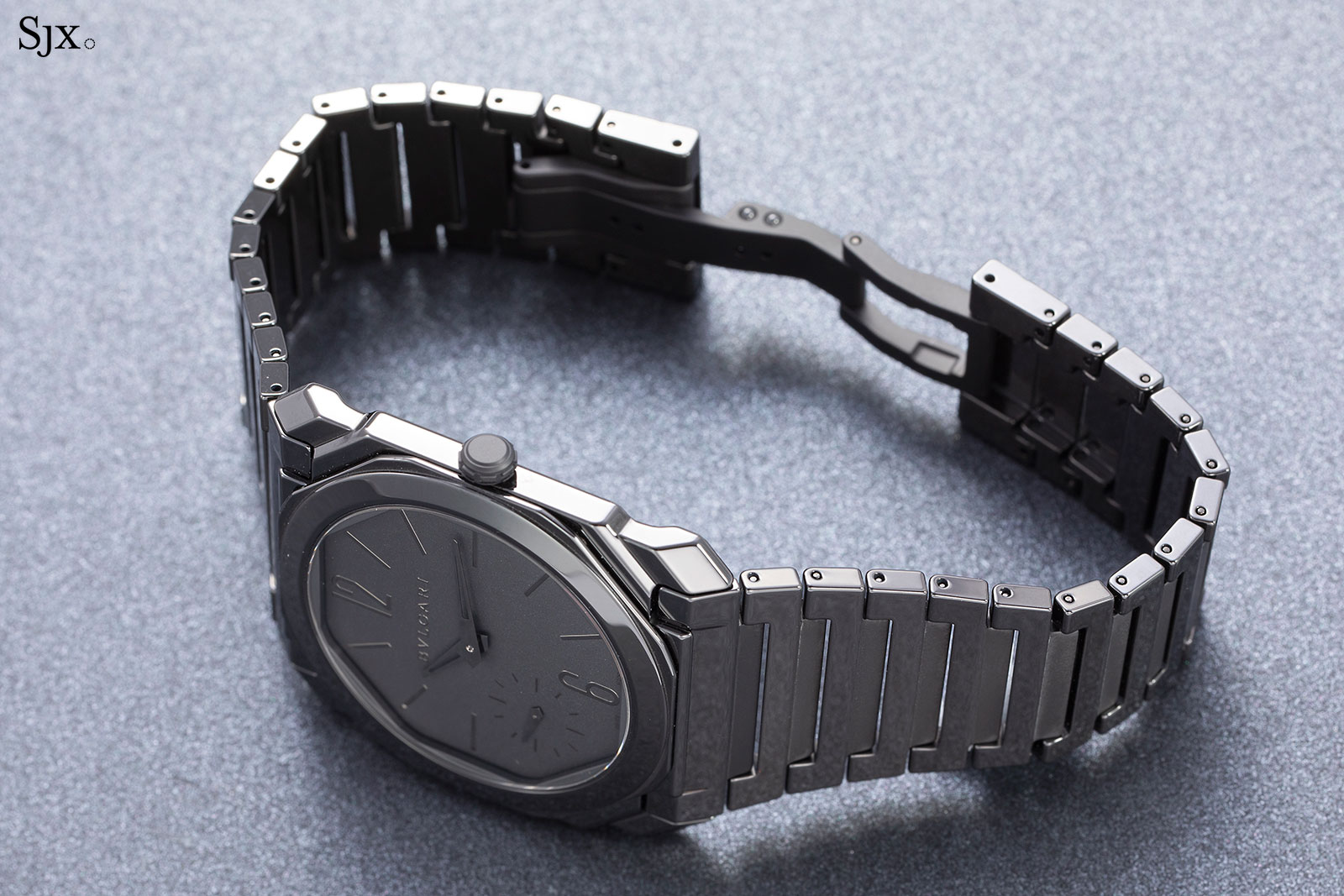
Ceramic details
The ceramic Octo is almost entirely ceramic. Except for the movement, hands, and pins for the bracelet, the watch is ceramic though and through, including the dial and clasp.
Though it looks identical to the titanium Octo Finissimo, the ceramic version is constructed entirely differently. The degree of difference is illustrated by the case heights – the titanium version is 5.15 mm high, while the ceramic is 5.5 mm.
Because ceramic is hard but brittle, it can’t withstand torsional force, which means no screws can be used in ceramic. The ceramic case middle is instead sandwiched in-between the bezel and back.
The bezel is actually a ceramic cap over a titanium inner bezel, which has tubes to accommodate case back screws, which are actually hex-head bolts. The bolts go in through the back, through the tubes and into the titanium bezel, holding the whole case together.
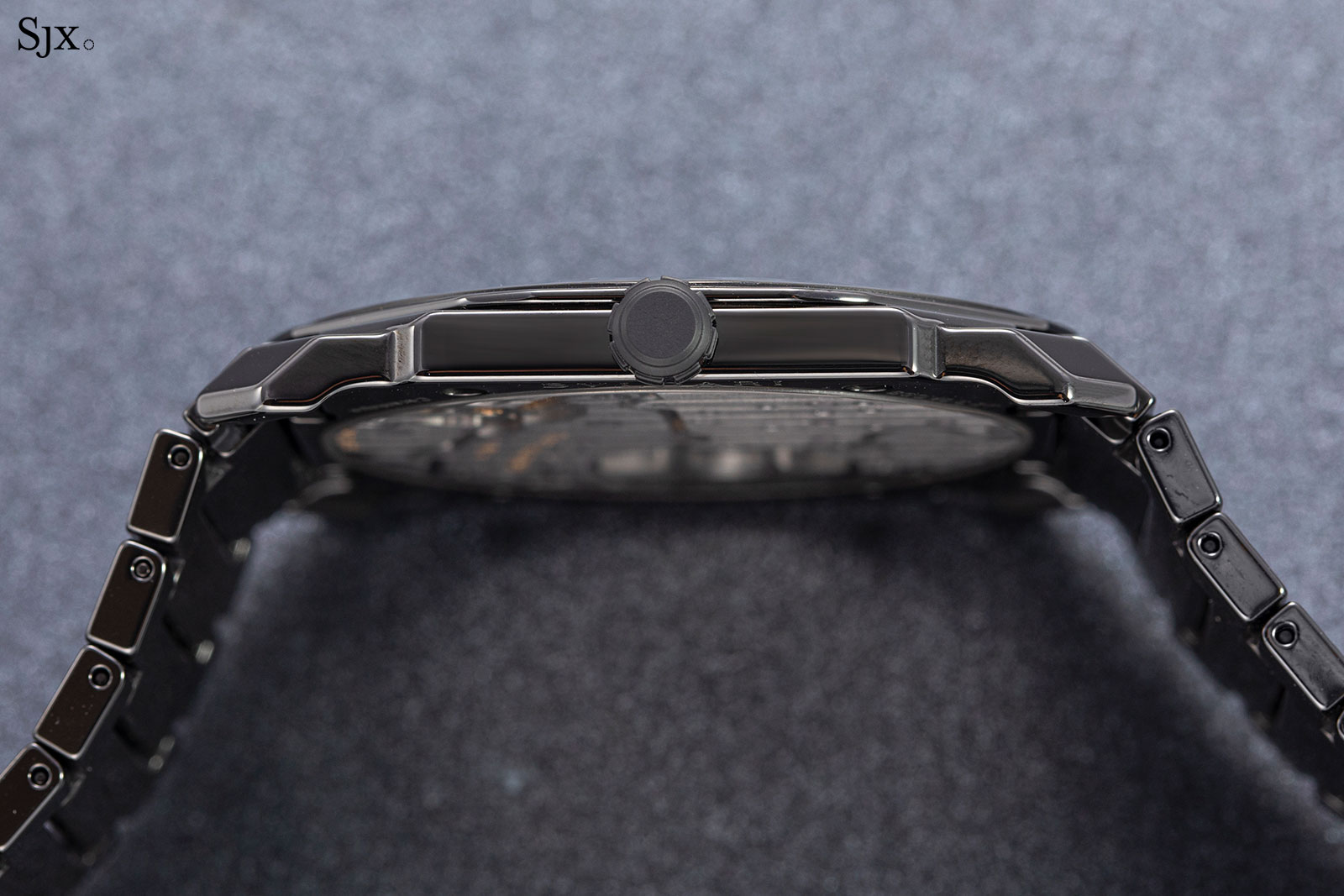
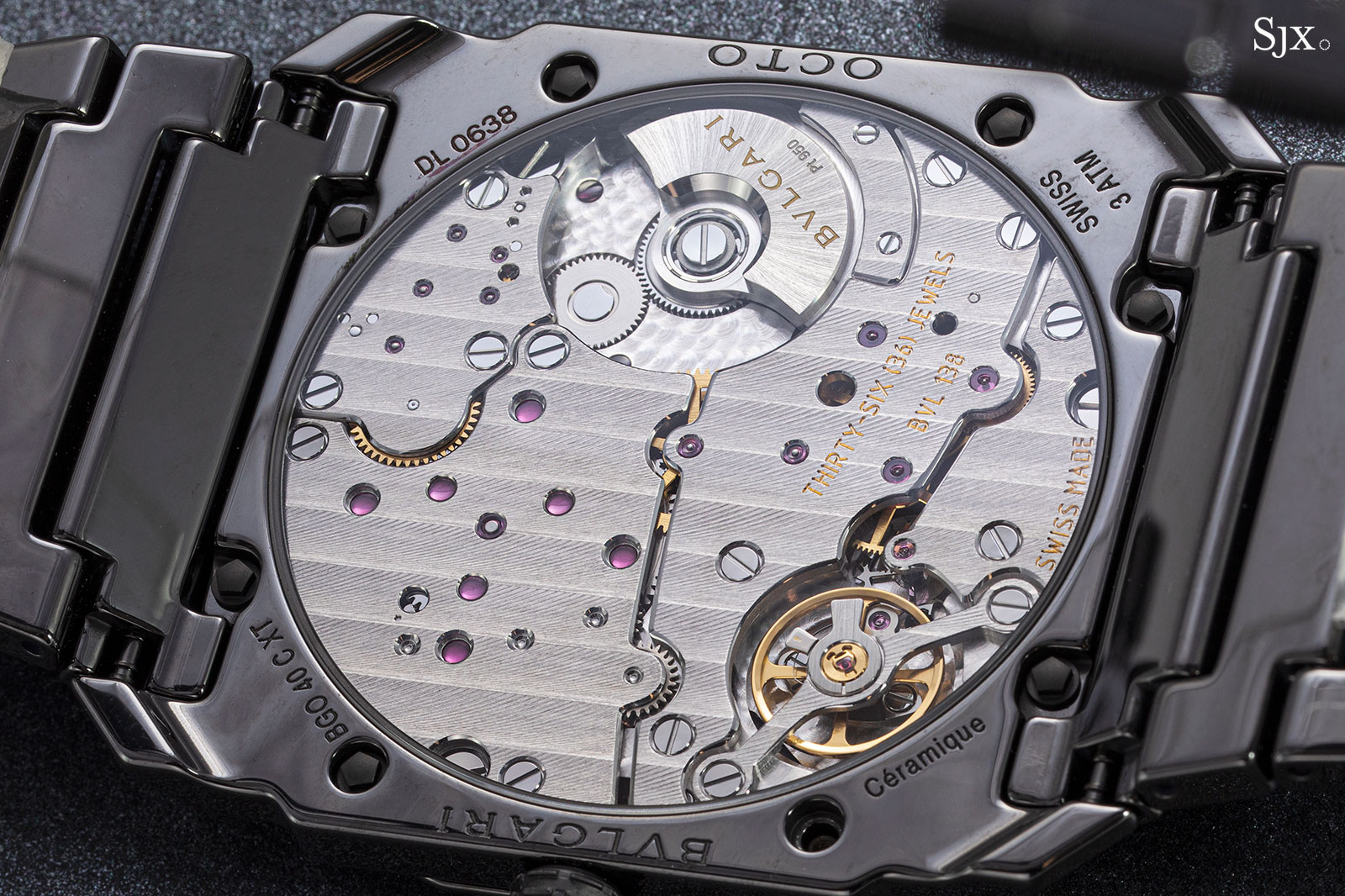
The back with its eight hex-head bolts
Equally notable is the bracelet. In fact, during a conversation earlier in the year, Fabrizio Buonamassa, Bulgari’s talented design chief, said the bracelet was probably the most challenging part of the watch to construct and produce.
Specifically, it was the eight links at the clasp, which are hollowed out on the reverse in order to accommodate the clasp, which sits in the recesses in order to be as flat as possible when closed.
The eight links had to be extremely thin – Mr Buonamassa describes them as “absolutely thin” – yet strong enough to be durable. The thinness was straightforward enough to achieve with the titanium bracelet, but altogether more complex for ceramic.
As the links are produced by a process known as sintering – heating ceramic powder in a mould to fuse the powder – getting the exact thinness for the hollow links was difficult, particularly because the links have to be shrunk to the right size and density during the sintering process.
The clasp is also unique to the ceramic version. While the metal versions of the watch have sprung, friction-fit closures that are part of the clasp, the ceramic clasp is rigid and so uses sprung ball bearings instead.
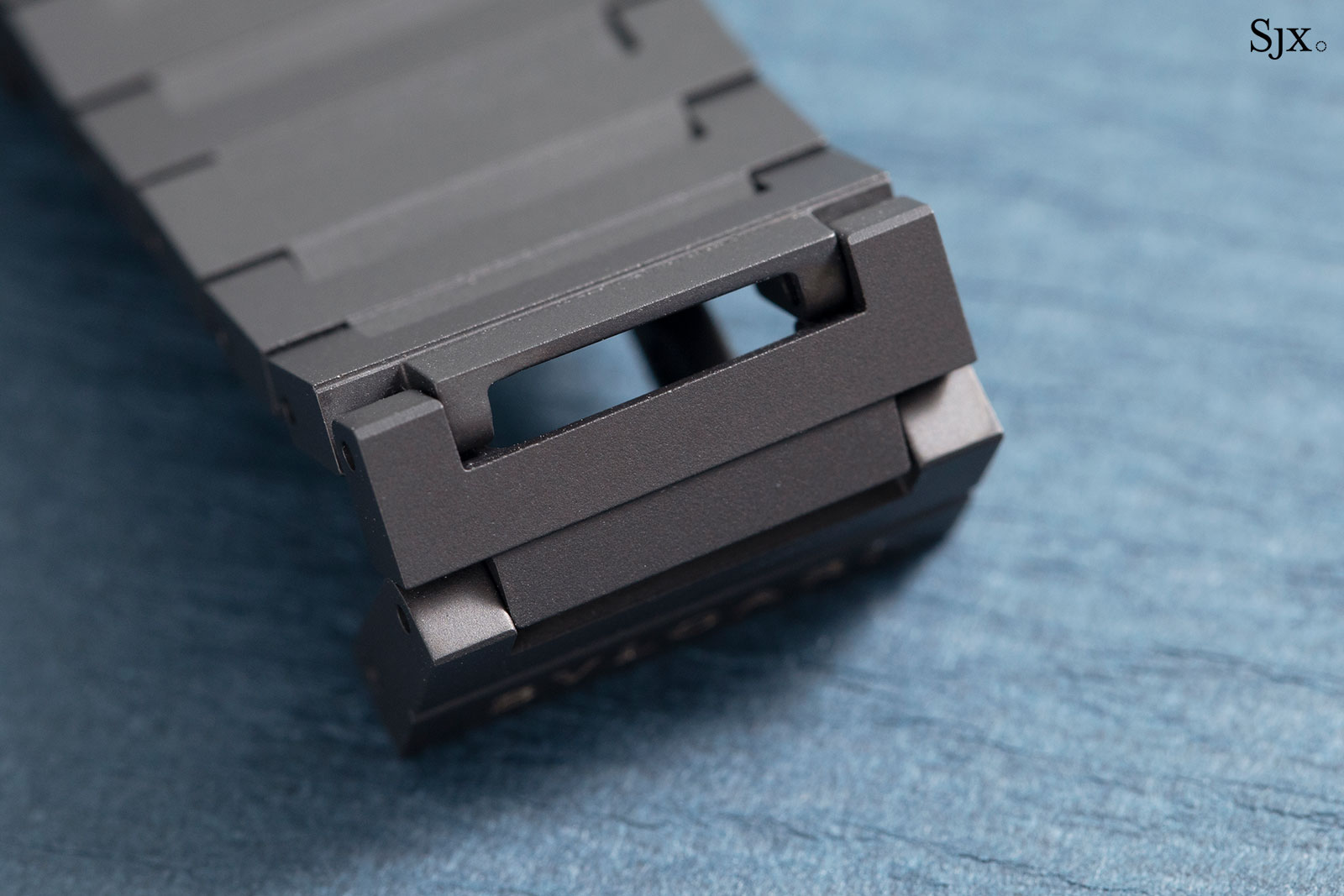
The hollowed out links at the clasp
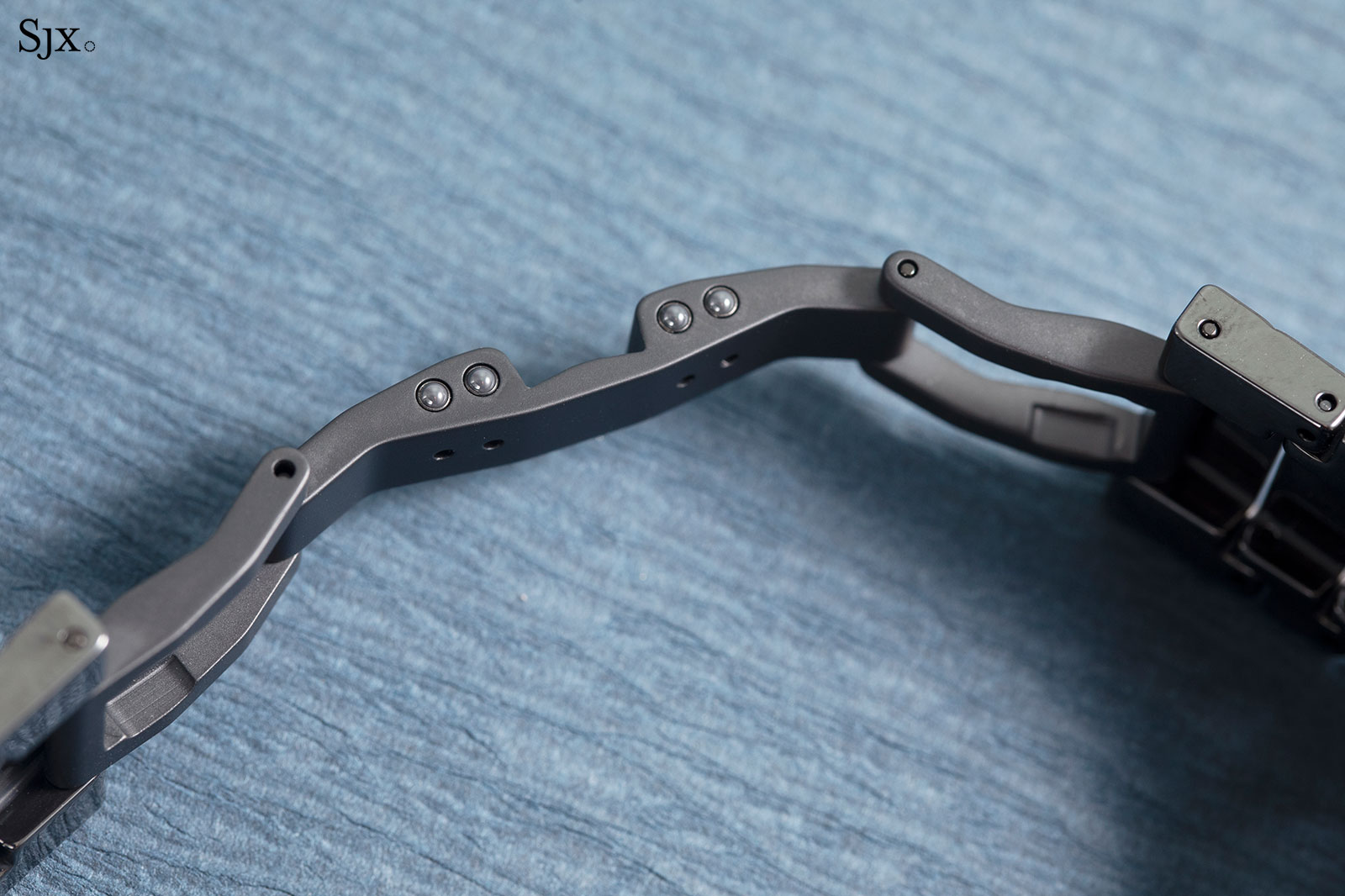
The all-ceramic clasp
Shades of black
Both versions of the Octo Finissimo in ceramic vary only in colour and surface finish. Though the new Octo is officially “Sandblast-Polished Ceramic”, it is mostly polished, with only the central portions of each link sandblasted to a matte finish.
Generally simple in execution, the polished finish is consistent and even, and excellent at the price point. But the polished finish creates its own aesthetic shortcoming: the edges of the case and bracelet are more rounded than on the matte version. As a result, the watch looks slightly softer and shinier, and less precisely shaped than the matte version.
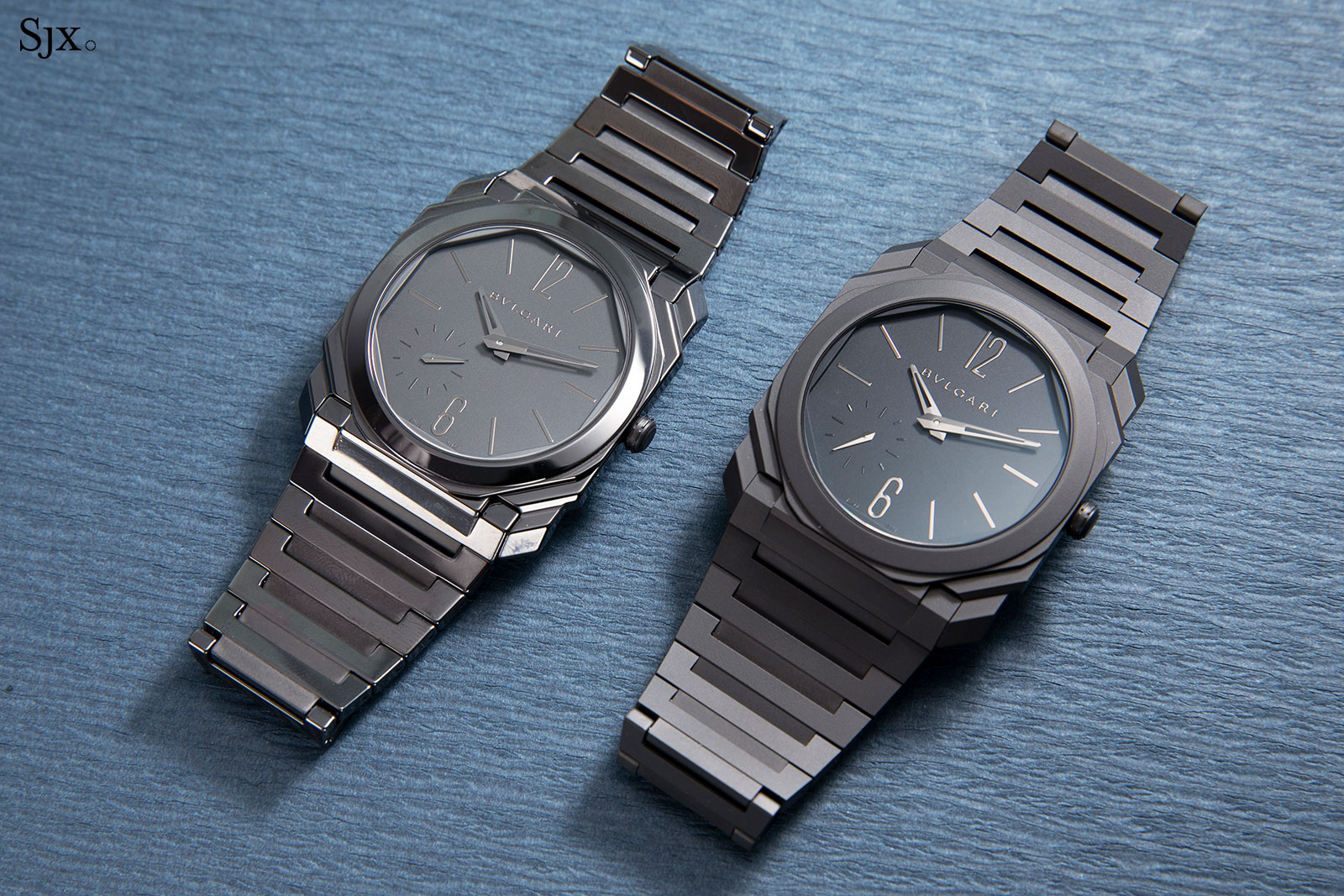
The polished ceramic Octo (left), and its matte counterpart
The rounded edges of the case and bracelet also results in obvious gaps where the components join, namely in between each link as well as where the bracelet meets the case. In fact, the gaps appear more prominent on the polished model than on the matte version.
It is doubtlessly an optical illusion due to the rounded edges – I’m certain tolerances are the same for both versions – but the gaps are more apparent.
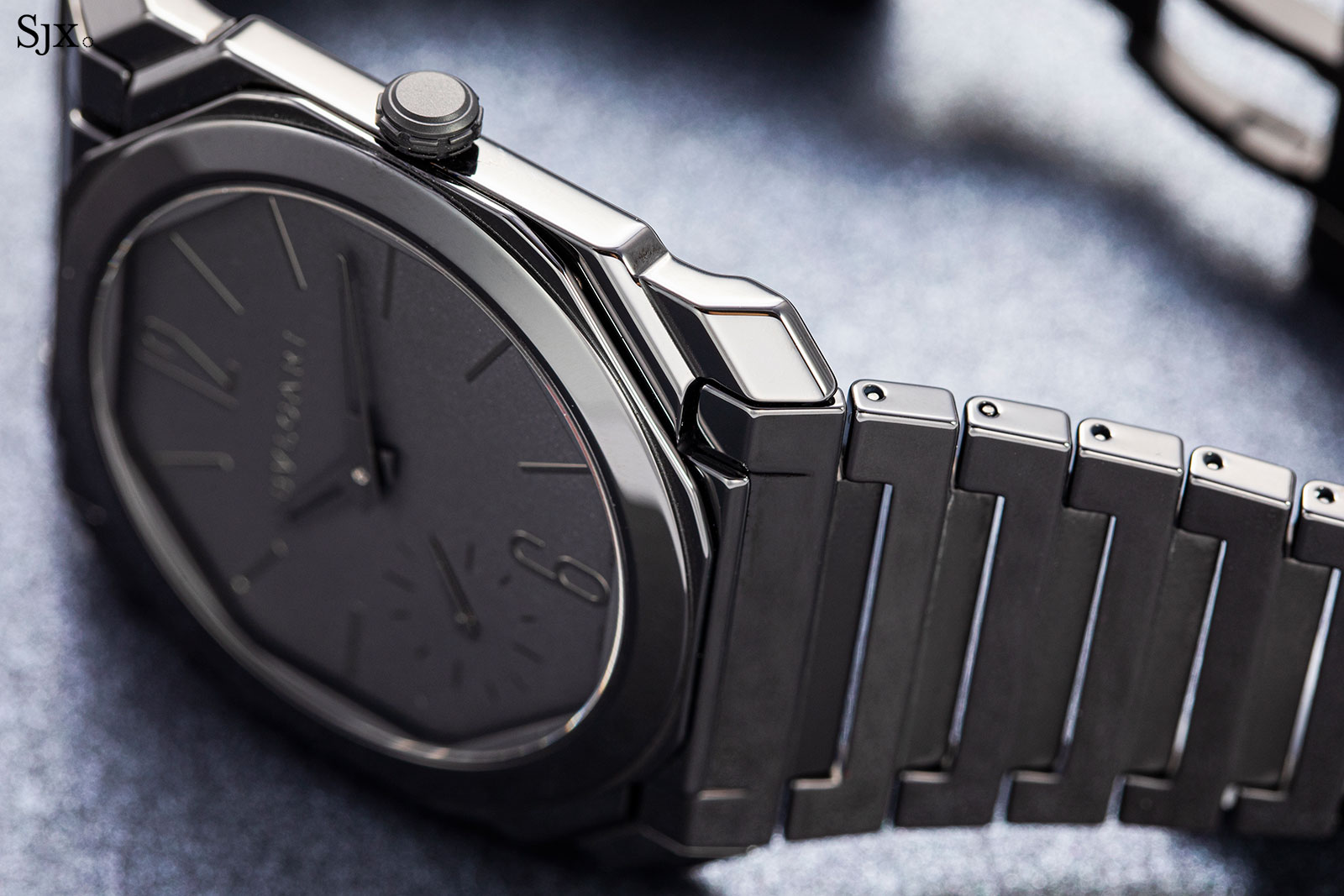
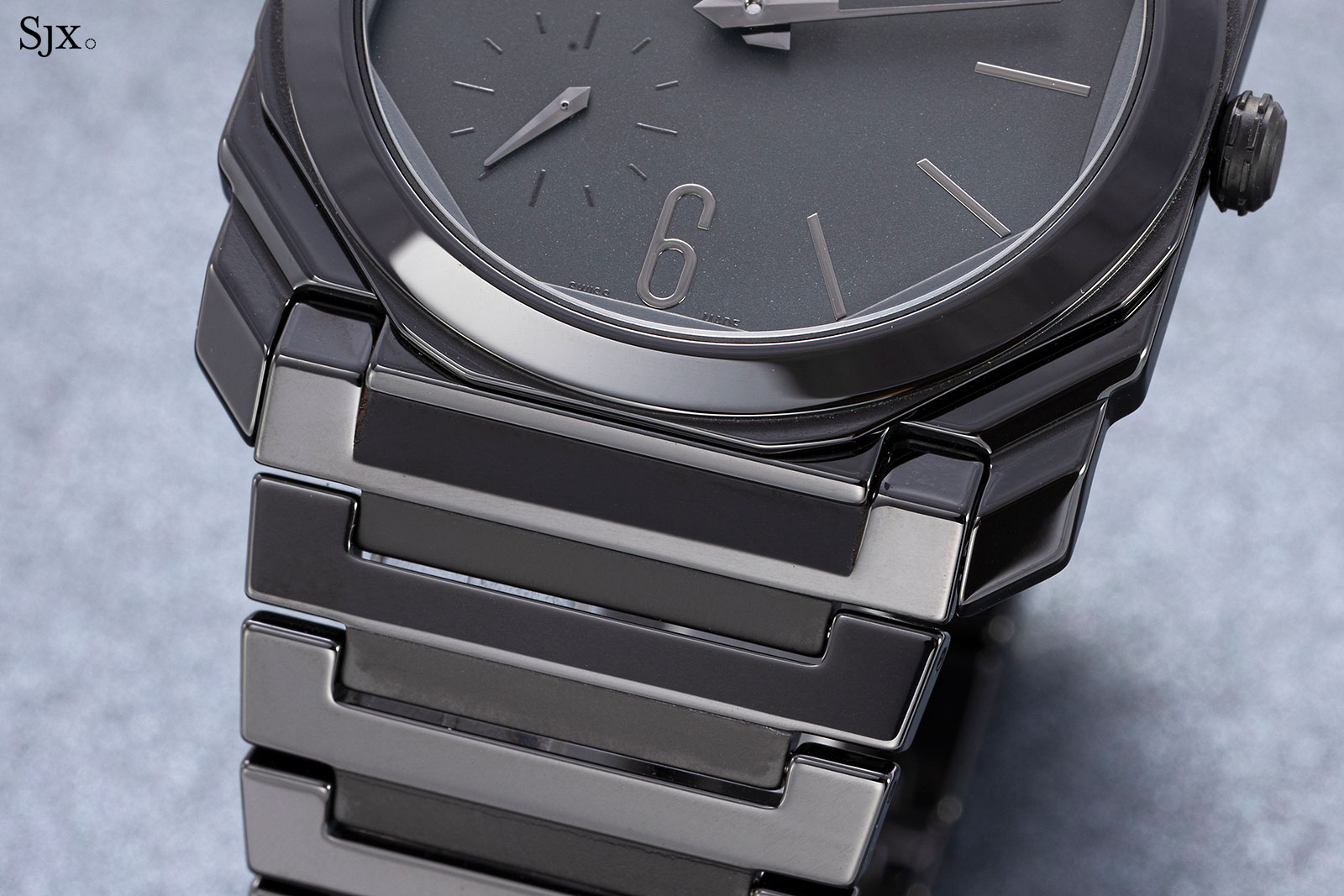
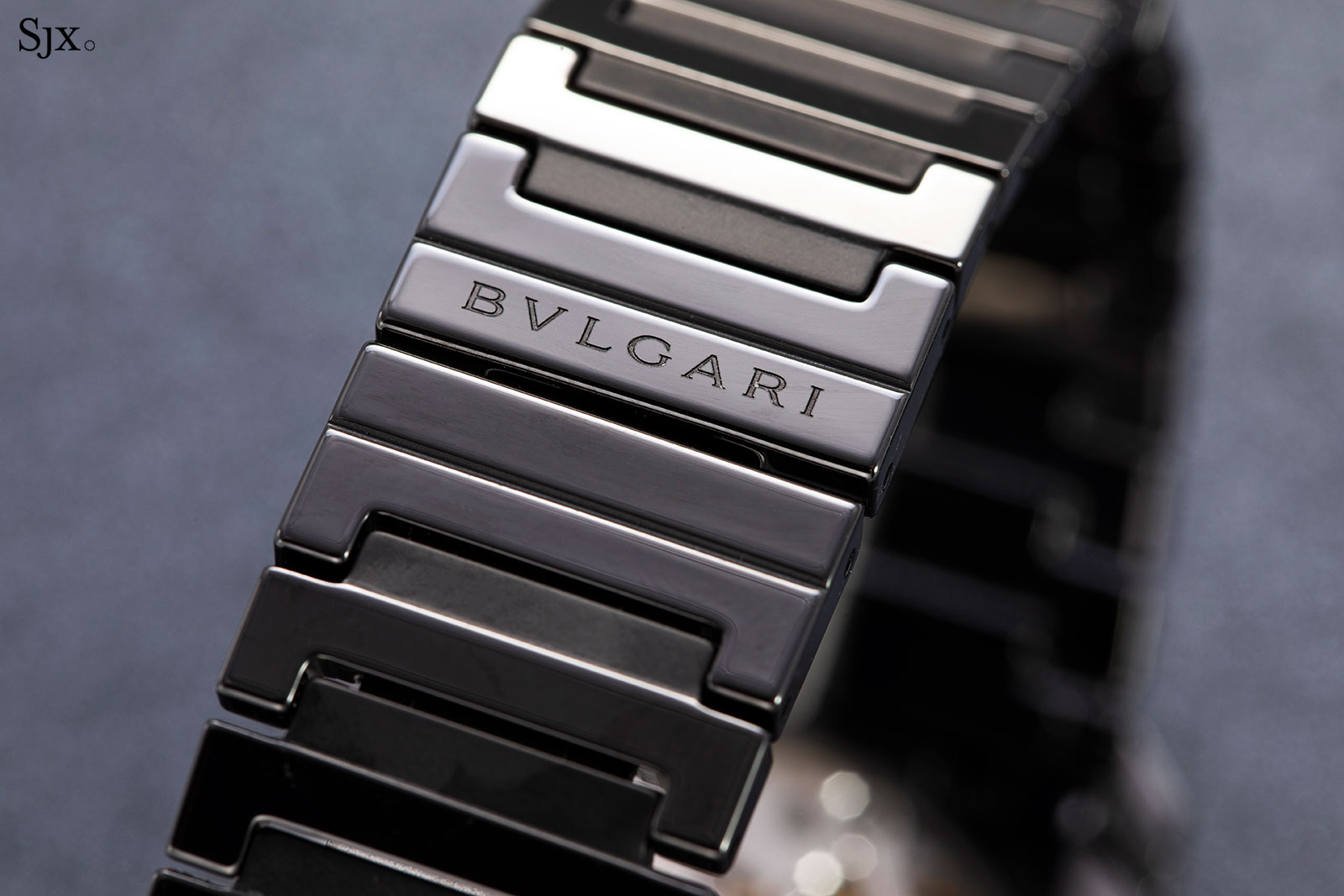
The hidden clasp
Made of ceramic, the dial is smartly done in different shades and textures, giving it good legibility, despite the lack of colour.
The dial is a matte dark grey, while the hands and hour markers are a glossy medium grey, allowing them to catch the light and stand out against the dial. And in a smart detail reflecting the thought that went into its design, the subsidiary seconds track is printed in matte black, separating it from the rest of the dial markings.
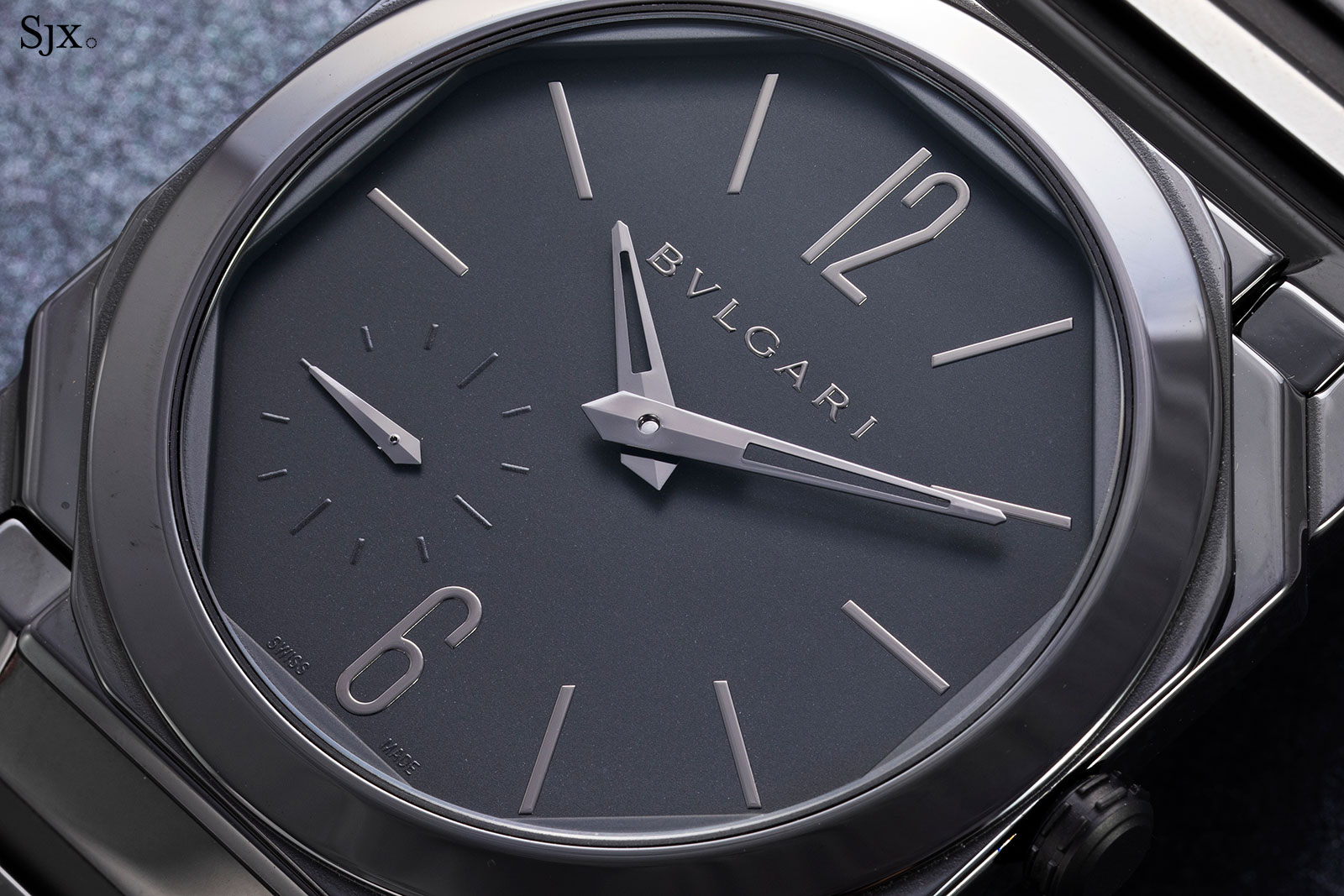
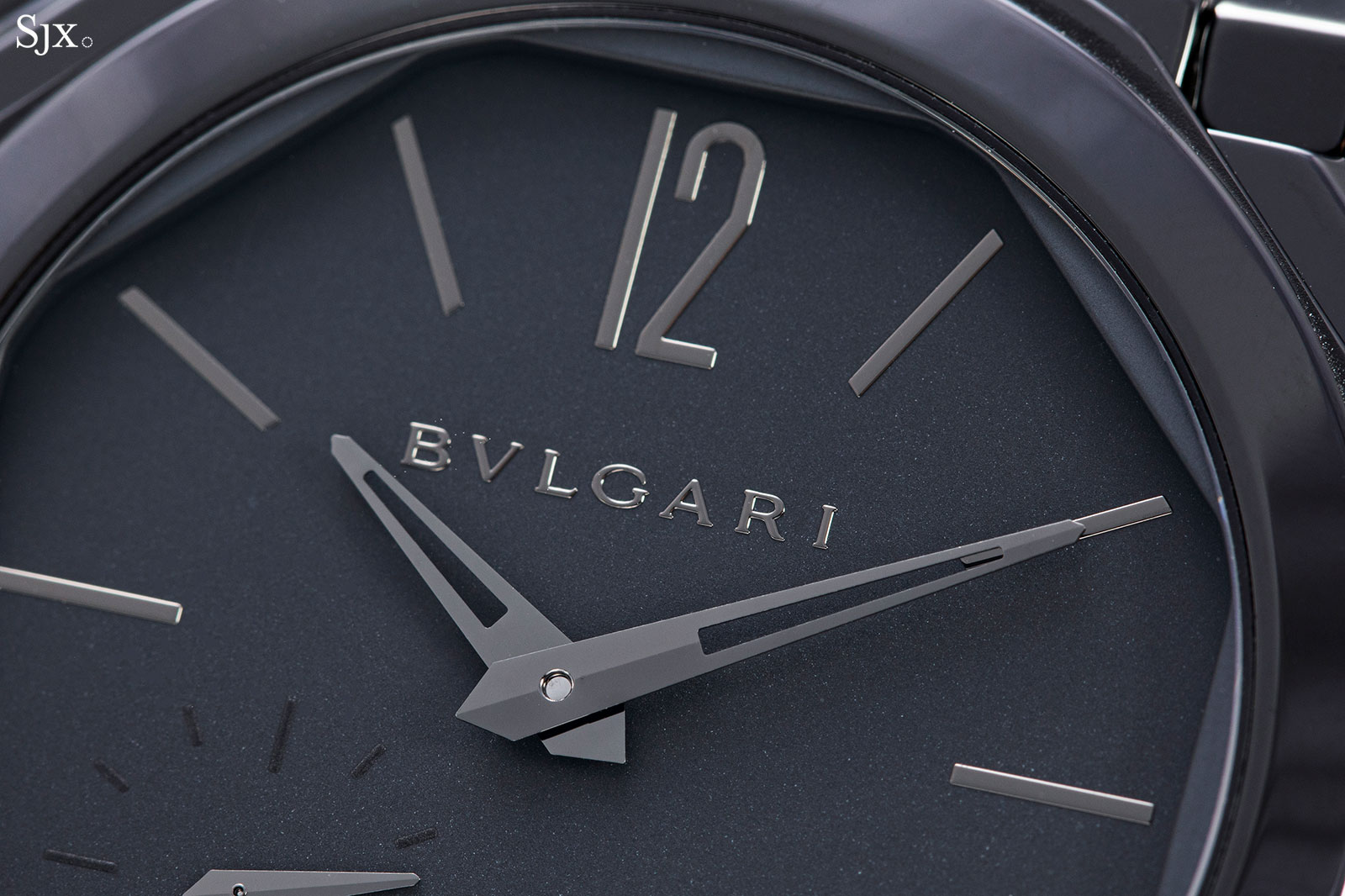
The shiny hour markers and logo are made of thin metal stickers
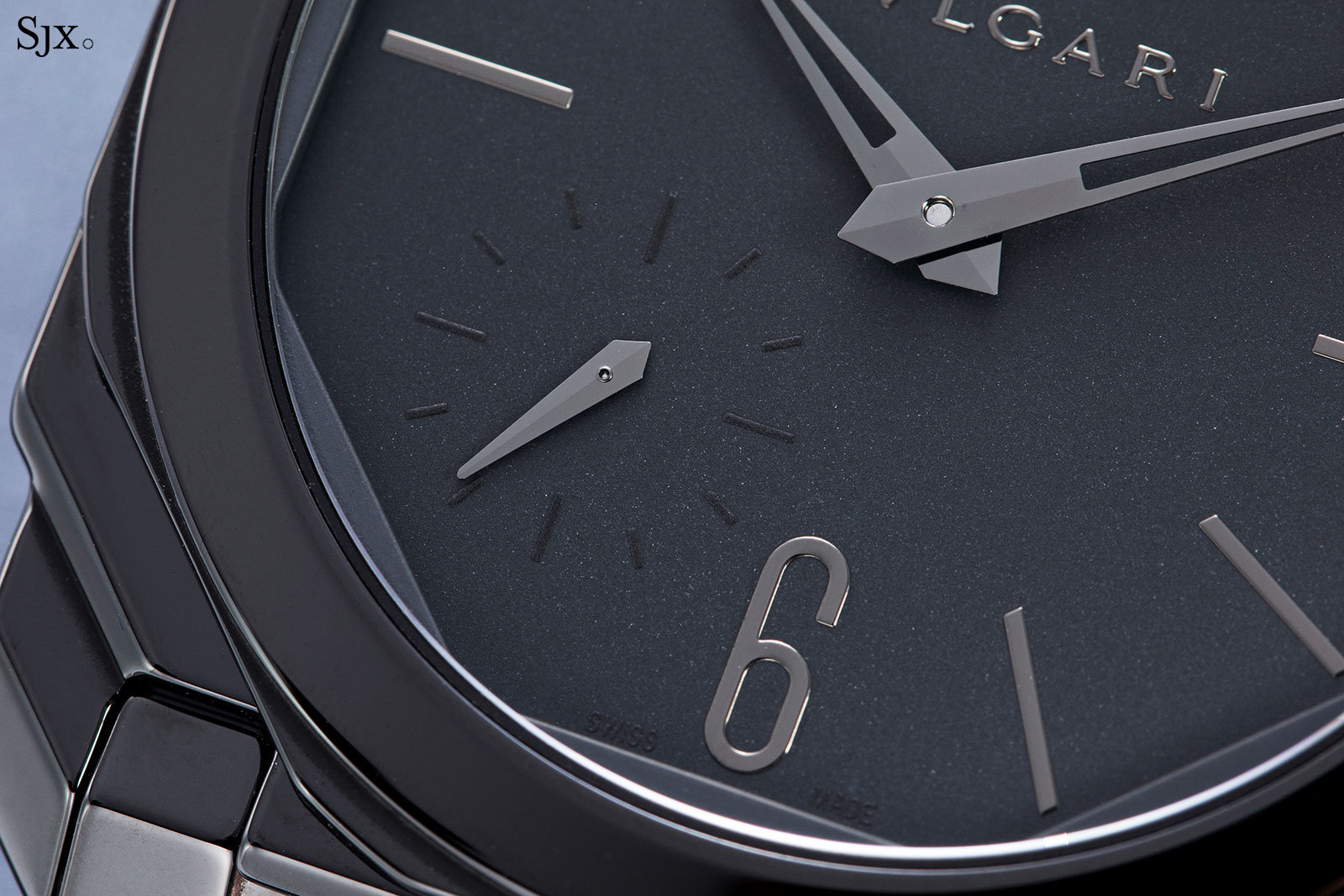
The movement
The thinnest automatic movement on the market, the BVL138 inside manages a power reserve of 60 hours, thanks to the largish barrel that’s combined with a very small balance wheel.
But more interesting than the running time is the its construction, which is thin yet reasonably robust. Some of the features designed to strengthen the movement can be discerned from the back.
One of the more obvious is the balance bridge. For stability – a more pressing requirement in a thin movement with even thinner parts – the balance is secured on both sides by a bridge, instead of the more common cock that is anchored on just one side.
Less obvious are the extra jewels in the barrel bridge – there appear to be seven in addition to the one for the mainspring arbour – which are presumably to stop any movement parts from grinding against the underside of bridge.
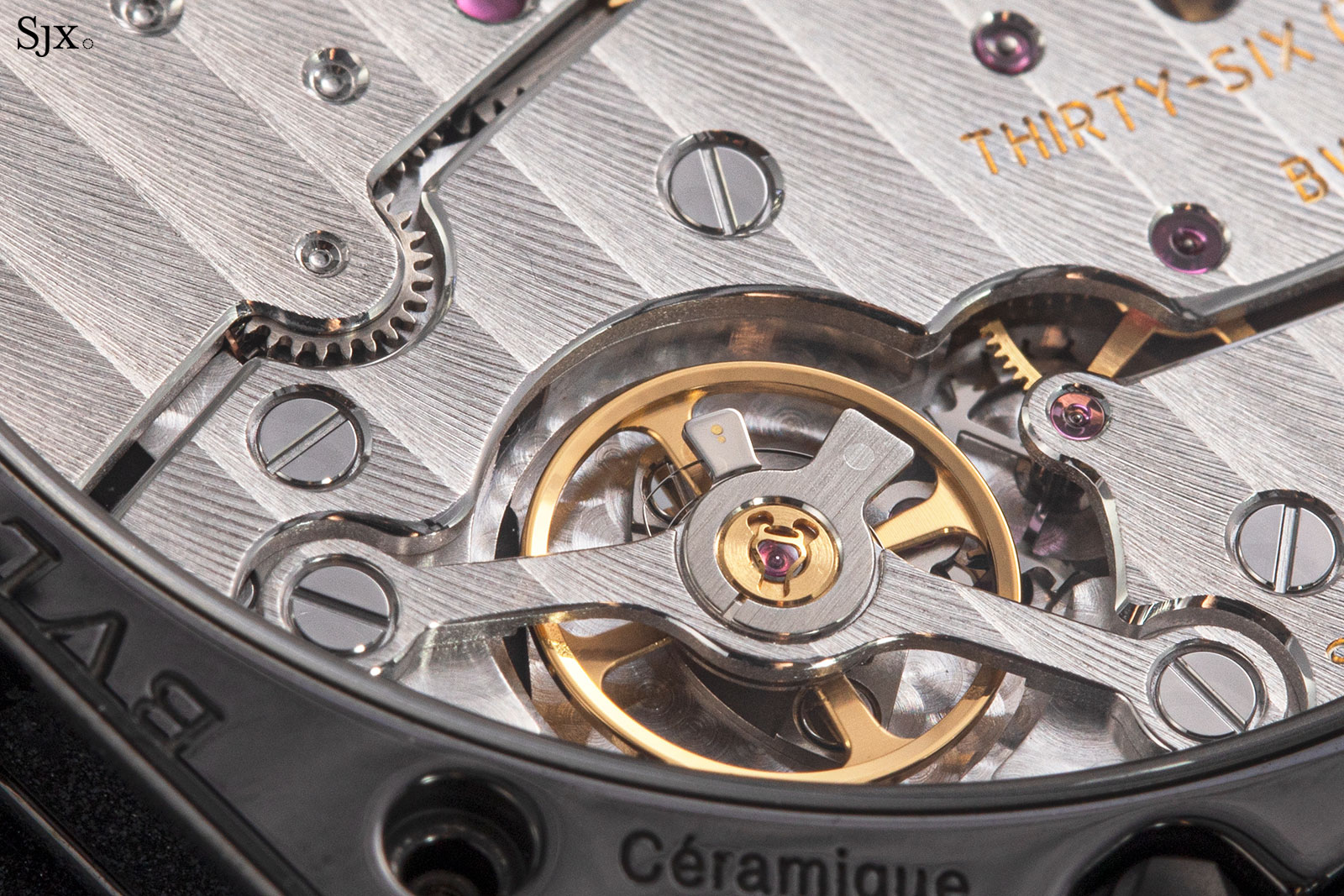
The balance bridge with its simple stud and regulator
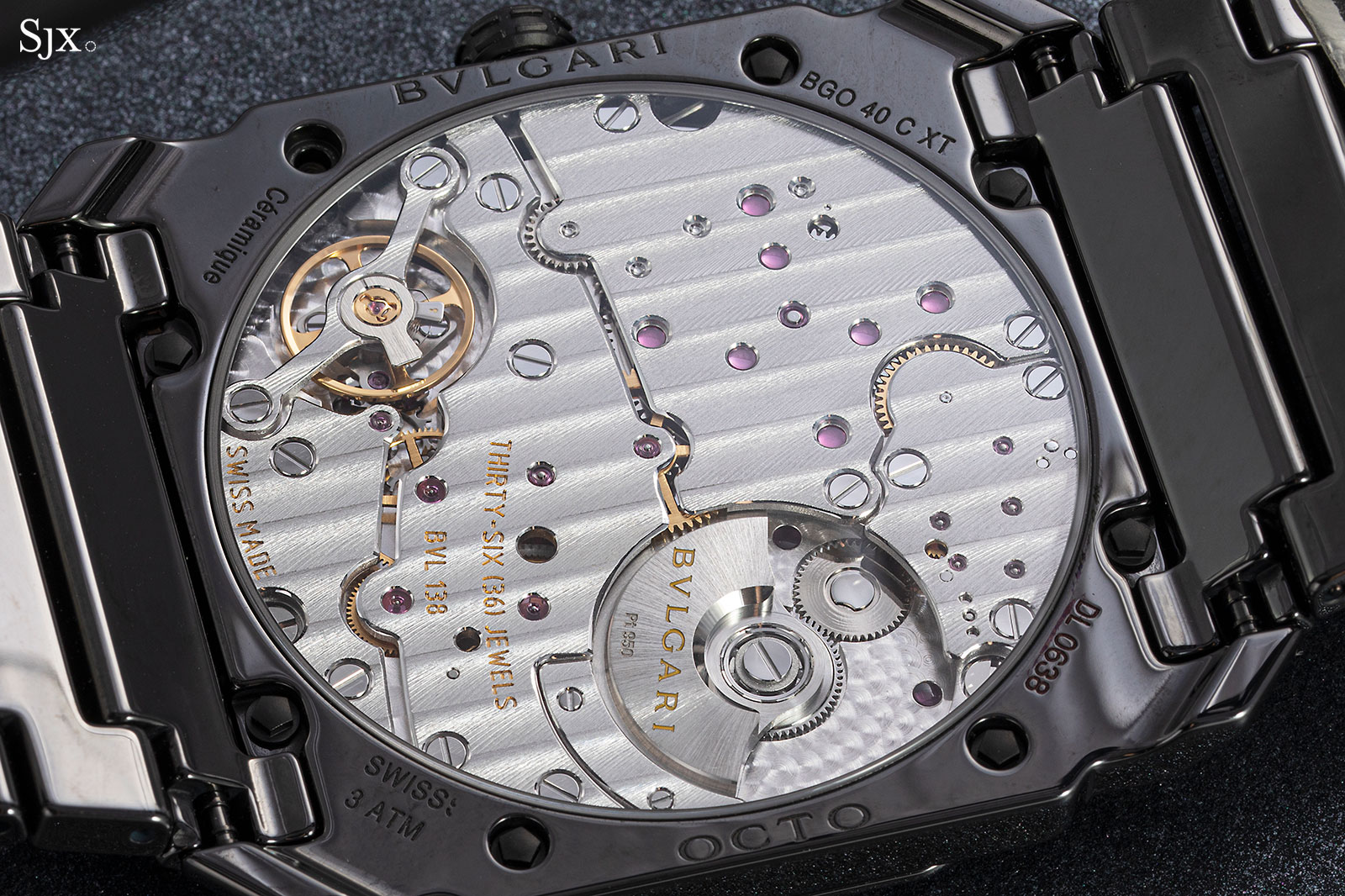
A downside of the movement’s construction is it visual flatness; the view from the back is dominated by four large bridges that look modern and functional for a plain overall look.
Up close, it gets a bit more interesting. The finishing is attractive and slightly above average for a watch in this price range, which means neat, clean, and done by machine. The bevels on the edge of the bridges, for instance, are mirror polished, while the perlage on the base plate below the rotor and balance wheel is fine in size and application.
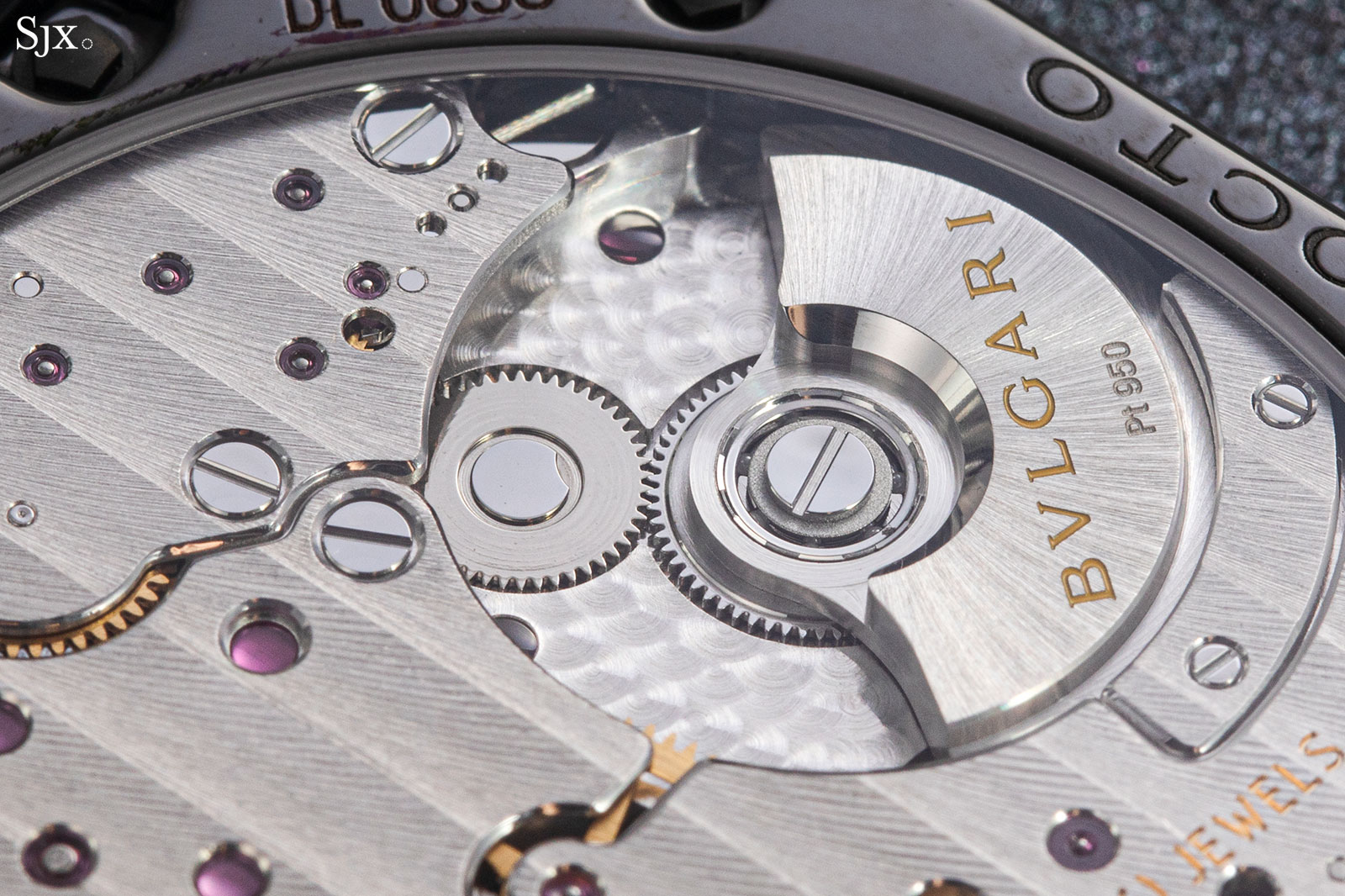
Concluding thoughts
Whether or not you like the polished finish, the slim construction of the ceramic case and bracelet is impressive. Combine that with the movement, and the result is a watch that is fairly priced for what it is. Plus the enormous variety of Octo Finissimo models – which admittedly diminishes the appeal of the watch a little – also means there’s an iteration to suit almost any preference.
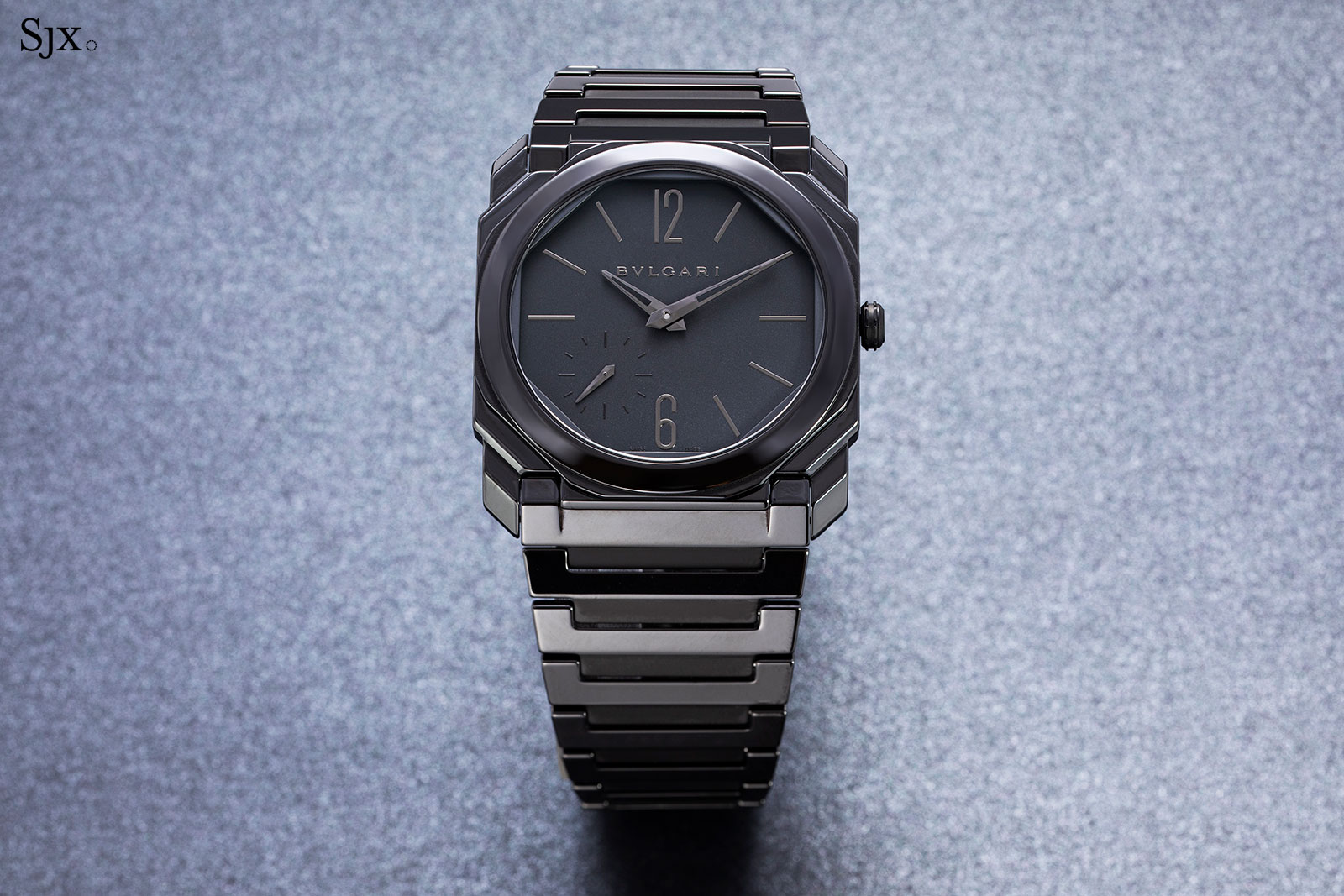
Key facts and price
Octo Finissimo Automatic Black Sandblast-Polished Ceramic
Ref. 103368
Case diameter: 40 mm
Height: 5.5 mm
Material: Black ceramic
Water resistance: 30 m
Movement: BVL138
Functions: Hours, minutes, and seconds
Frequency: 21,600 beats per hour (3 Hz)
Winding: Automatic
Power reserve: 60 hours
Strap: Black ceramic bracelet
Availability: At both retailers and boutiques
Price: US$15,600, or 22,000 Singapore dollars
For more, visit Bulgari.com.
Back to top.